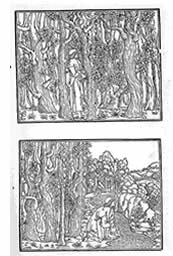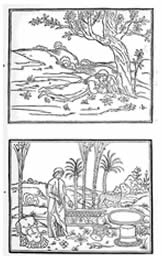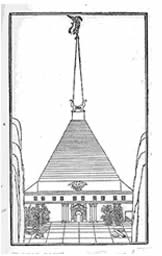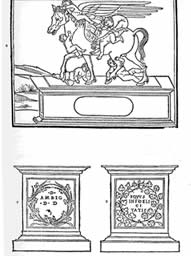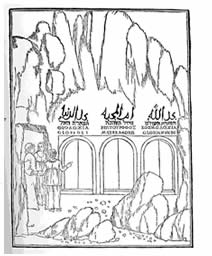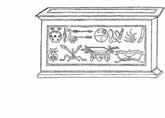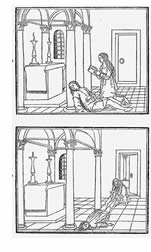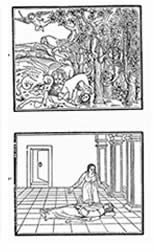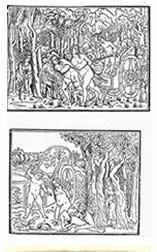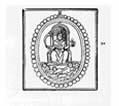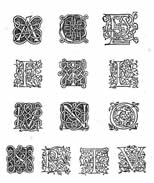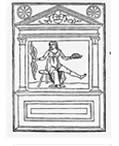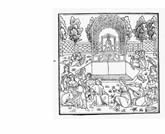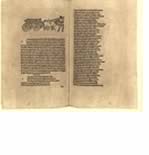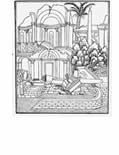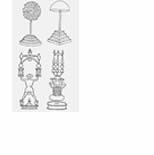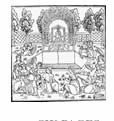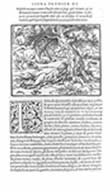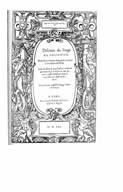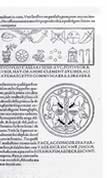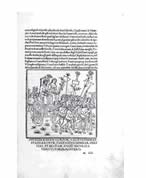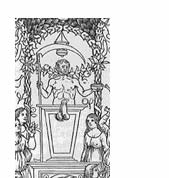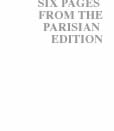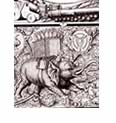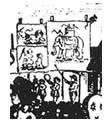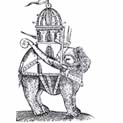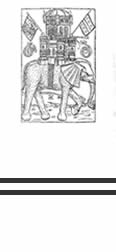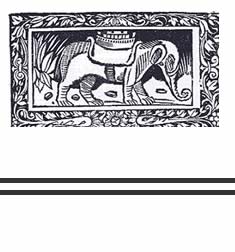Hypnerotomachia
Poliphili (The Strife in the Dream of Poliphilus)
One of the
most celebrated illustrated books of the Quattrocento, and of all time,
the book shows us inventive and well drawn illustration within elegantly
designed page layouts. The esoteric narrative of erotic love triumphant
adds to the attraction of the publication. The author was probably Colonna,
a flamboyant and scandalous Dominican Friar. The illustrator is less certain,
but contemporary opinion gives the work to Benedetto Bordon. The central
character pursues an erotic fantasy through a strange dreamlike landscape
- to be reconciled with his great passion in front of the Fountain of
Venus.
Linda Fiertz-David, The Dream of Poliphilo, The Soul in Love,
Spring Publications, Dallas, 1987 (the Bollingen Lectures).
E.H.Gombrich, Symbolic Images, Phaidon, Oxford, 1975,
"Hypnertomachiana".
Anthony Blunt, "The Hypnerotomachia Poliphili in Seventeenth Century
France", Journal of Warburg and Courtauld , October
1937 (and Misc.Note).
The book was immensely influential in defining what formal gardens could
achieve, and how narratives were to unfold therein. The scattering of
antique remains also founded that evocative device and The Oxford Companion
to Gardens p.268 records that the architect and designer William Kent
owned several copies of the book. The book was the first depiction of
complex interweavings of geometry in the service of topiary and the Knot
Garden.
POSSIBILITIES
Here is
the original page layout of the edition published anonymously in Venice
in 1499. From that date until 1833 it was reprinted ten times. |
CHARACTERISTIC
IMAGES
selected
to give an idea of the range of imagery available, are from a photo-lithographic
version issued to British art schools in 1893. They are crisp, clumsy
in places and censored. But apart from that....The narrative is an extended,
abstruse, and sometimes dislocated sequence of events that happened to
Poliphilus on his journey to Death and Redemption. He is first seen wandering
through a dense forest. He stumbles upon a stream from which he refreshes
himself. After sleeping a while he wakes in a mysterious landscape of
shards and ruins. On of the most influential images in the book, a temple
surmounted by a giant obelisk.
Many of
the symbolic images address the issue of the paradox, Make Haste Slowly
- Festina Lente .
Here the
winged horse is encumbered by clambering putti.
The narrative
presents a whole cluster of tombs bearing inscriptions.
Later in
the story Poliphilus is led by his attendants to a choice of three doorways.
beneath this, is a typical rebus/emblem panel of puzzles for the reader
to decode.
The version
of Eden, Poliphilus enters the Garden of Perfection.
published in Venice in 1499 by Aldus Romanus; the woodcuts do look like
the work of the illustrator of the Poliphili but without the delicacy
of touch.
|
THE
ELEPHANT AND CASTLE
01 a plate
from Domenico Amici, Raccolta di Trenta Vedute Degli Obelisch
iScelte Fontane, published by the author in Rome in 1839.
02 Titlepage
to the sumptuously printed text of the Royal Law of Frederick III, King
of Denmark, in 1665 , Lex Regia det er; Den Souveraine Konge-lov
, Copenhagen 1709 . A rampaging elephant with troop carrier thunders
across the bottom panel.
03 From
the children's book, Mamma's Present, plates dated 1801
and published in Britain (London) by John Marshall. The Professional narrator
tells the tale in the background.
04 A woodcut
of the subject with the mark of the printer GD, from the Dutch town of
Gouda c1490.
05 The
original image from the Book
06 H.Chaveau,
C'Est l'Ordre qui a este tenv a la novvelle et ioyevse,
Dallier, Paris, 1549.
07 From
a book of architectural design, a combination of Durer's Rhinoceros with
the Poliphili spectacle.
08 Libellus
de Natura Animalium This Italian fifteenth century Bestiary was
printed between 1508 and 1512 in Mondovi. The names of the author and
illustrator are in doubt.
 PARIS,
GIANT ELEPHANT 1758 PARIS,
GIANT ELEPHANT 1758
 BERNINI'S
ELEPHANT FROM KIRCHER 1666 BERNINI'S
ELEPHANT FROM KIRCHER 1666
 THE
TRAVELS OF SIR JOHN MANDEVILLE 1727 THE
TRAVELS OF SIR JOHN MANDEVILLE 1727
 ELEPHANT
AND CASTLE 2007 ELEPHANT
AND CASTLE 2007
 ELEPHANT
AND CASTLE 2007 ELEPHANT
AND CASTLE 2007
 FESTIVITIES
FOR THE DUC D'ANJOU 1582 FESTIVITIES
FOR THE DUC D'ANJOU 1582
 from
Vegetius, DE RE MILITARI...1592 from
Vegetius, DE RE MILITARI...1592
 from
Chesneau, Trophées Medallique...1661 from
Chesneau, Trophées Medallique...1661
 from
Hartenfels, Elephantographia...1715 from
Hartenfels, Elephantographia...1715
 page from Howard Simon's 500 Years of Art in Illustration 1945 page from Howard Simon's 500 Years of Art in Illustration 1945
 page from Howard Simon's 500 Years of Art in Illustration 1945 page from Howard Simon's 500 Years of Art in Illustration 1945
 A PLATE FROM H BRADLEY MARTIN'S COPY, Venice 1499 SLEEPING FIGURE A PLATE FROM H BRADLEY MARTIN'S COPY, Venice 1499 SLEEPING FIGURE
 ANOTHER PLATE FROM H BRADLEY MARTIN'S COPY, Venice 1499 THE BOWER ANOTHER PLATE FROM H BRADLEY MARTIN'S COPY, Venice 1499 THE BOWER
|





